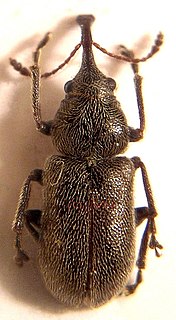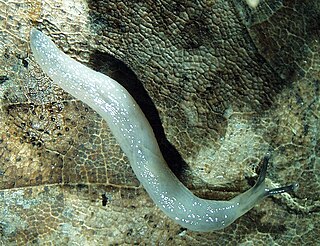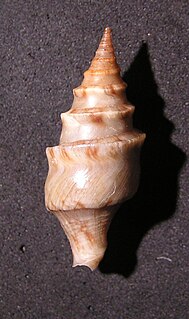Related Research Articles

Aralosaurus was a genus of hadrosaurid dinosaur that lived during the Late Cretaceous in what is now Kazakhstan. It is known only by a posterior half of a skull and some post-cranial bones found in the Bostobe Formation in rocks dated from the Upper Santonian-Lower Campanian boundary, at about 83.6 Ma. Only one species is known, Aralosaurus tuberiferus, described by Anatoly Konstantinovich Rozhdestvensky in 1968. The genus name means Aral Sea lizard, because it was found to the northeast of the Aral Sea. The specific epithet tuberiferus means bearing a tuber because the posterior part of the nasal bone rises sharply in front of the orbits like an outgrowth. Aralosaurus was originally reconstituted with a nasal arch similar to that of North American Kritosaurus. For many years, Aralosaurus was thus placed in the clade of the Hadrosaurinae. This classification was invalidated in 2004, following the re-examination of the skull of the animal which allowed to identify in Aralosaurus many typical characters of Lambeosaurinae. In particular, this study revealed that Aralosaurus had a hollow bony structure located far in front of the orbits, which communicated with the respiratory tract. This structure being broken at its base, its shape and size unfortunately remains undetermined. More recently, Aralosaurus has been identified as the most basal Lambeosaurinae, and placed with its close relative Canardia from the upper Maastrichtian of France in the new clade of Aralosaurini.

Nemonychidae is a small family of weevils, placed within the primitive weevil group because they have straight rather than elbowed antennae. They are often called pine flower weevils. As in the Anthribidae, the labrum appears as a separate segment to the clypeus, and the maxillary palps are long and projecting. Nemonychidae have all ventrites free, while Anthribidae have ventrites 1-4 connate or partially fused. Nemonychidae lack lateral carinae on the pronotum, while these are usually present, though may be short, in Anthribidae.
Mysorelloides multisulcata is a species of tropical freshwater snail with an operculum, an aquatic gastropod mollusk in the family Paludomidae.

Boettgerilla is a genus of air-breathing land slugs, terrestrial pulmonate gastropod mollusks in the family Boettgerillidae.

Hercostomus is a genus of flies in the family Dolichopodidae. It is a large genus, containing more than 483 species worldwide.

Xanthochlorus is a genus of flies in the family Dolichopodidae. It is the only member of the subfamily Xanthochlorinae.

Paludomidae, common name paludomids, is a family of freshwater snails, gastropod molluscs in the clade Sorbeoconcha.

Freshwater snails are gastropod mollusks which live in fresh water. There are many different families. They are found throughout the world in various habitats, ranging from ephemeral pools to the largest lakes, and from small seeps and springs to major rivers. The great majority of freshwater gastropods have a shell, with very few exceptions. Some groups of snails that live in freshwater respire using gills, whereas other groups need to reach the surface to breathe air. In addition, some are amphibious and have both gills and a lung. Most feed on algae, but many are detritivores and some are filter feeders.

Conus tenuistriatus, common name the thin-line cone, is a species of sea snail, a marine gastropod mollusk in the family Conidae, the cone snails and their allies.
Conorbis is an extinct genus of sea snails, marine gastropod mollusks in the family Conorbidae.

Fulguropsis is a genus of sea snails, marine gastropod molluscs in the family Busyconidae, the crown conches and their allies.

Perrona is a genus of sea snails, marine gastropod mollusks in the family Clavatulidae.

Dillwynella is a genus of sea snails, marine gastropod mollusks in the family Skeneidae.

Pomaulax is a genus of sea snails, marine gastropod mollusks in the family Turbinidae, the turban snails.
Plesiothyreus is a genus of very small sea snails or limpets, marine gastropod mollusks in the family Phenacolepadidae.

Vermetus is a genus of sea snails, marine gastropod mollusks in the family Vermetidae, the worm snails or worm shells.

Pusillina is a genus of minute sea snails, marine gastropod mollusks or micromollusks in the family Rissoidae.
Worthenia is a genus of fossil sea snails, an extinct marine gastropod genus found in the fossil record. This genus is primarily found in rocks formed during the Devonian to Triassic periods from the central areas of North America. Worthenia was named for the paleontologist Amos Henry Worthen who lived 1813 - 1888.
Pusillina kazakhstanica is an extinct species of fossil sea snail, a marine gastropod mollusk in the family Rissoidae.

Cetotheriopsis is a genus of extinct cetaceans of the family Cetotheriopsidae.
References
- ↑ Cossmann (1888). Ann. Soc. malac. Belgique23: 62.
- ↑ Kollmann H. A. & Odin G. S. (2001) "Chapter D2 Gastropods from the Upper Cretaceous geological site at Tercis les Bains (SW France)". Developments in Palaeontology and Stratigraphy 19: 437-451. doi : 10.1016/S0920-5446(01)80045-5.
- ↑ Amitrov O. (2010). "Gastropods of rare families from the Tshegan Formation of Kazakhstan". Paleontological Journal 44(4): 384-390. doi : 10.1134/S0031030110040039.
- ↑ (1984). Annales de la Société royale zoologique de Belgique , Published by the Society 114-116: 316.
| | This Trochidae-related article is a stub. You can help Wikipedia by expanding it. |
| | This prehistoric gastropod article is a stub. You can help Wikipedia by expanding it. |